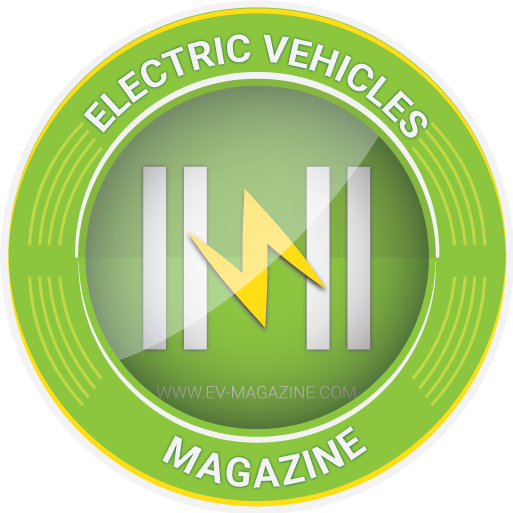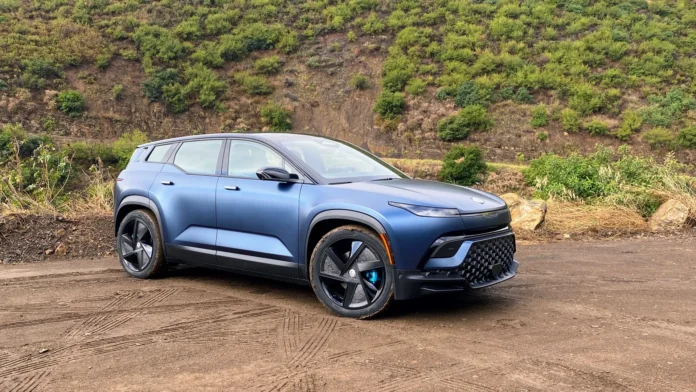
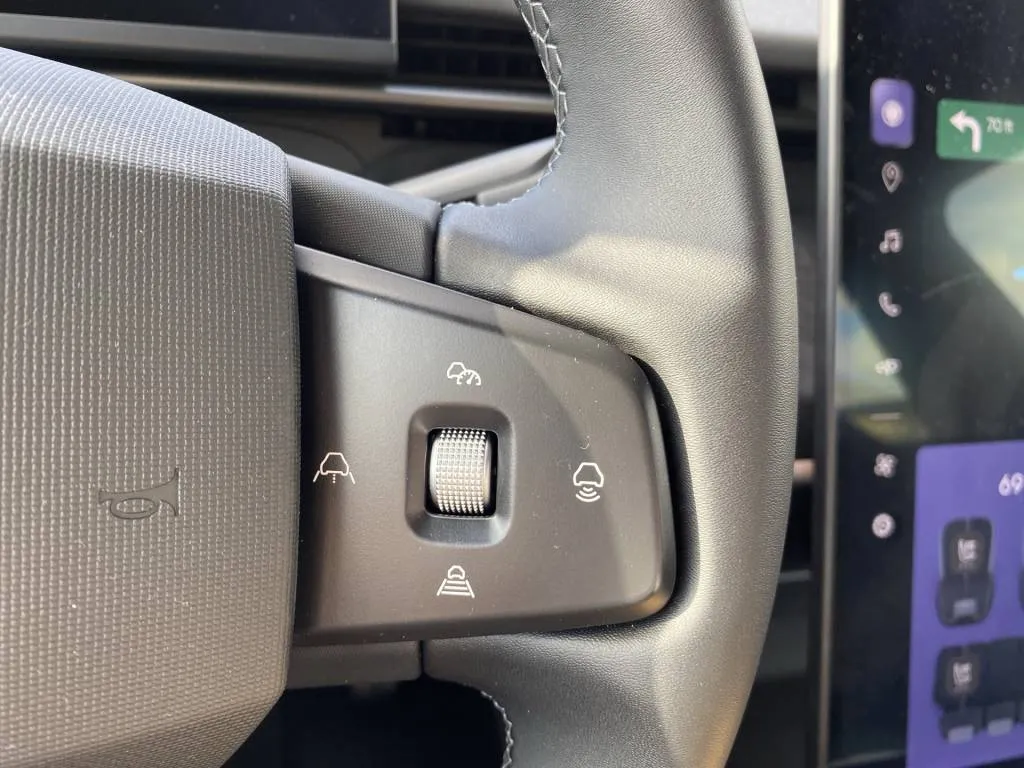



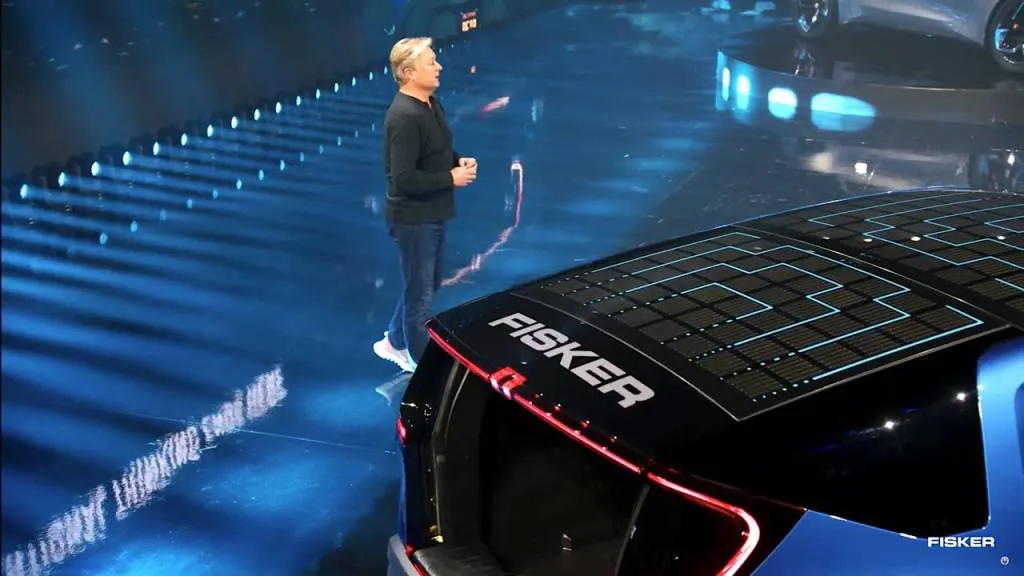
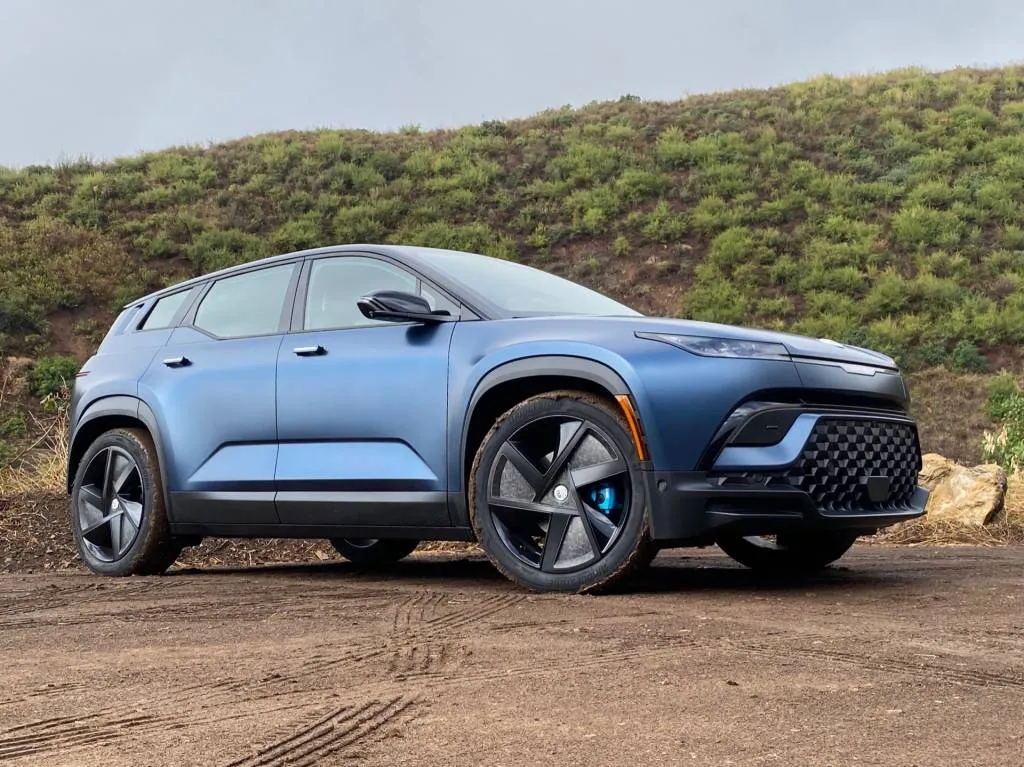

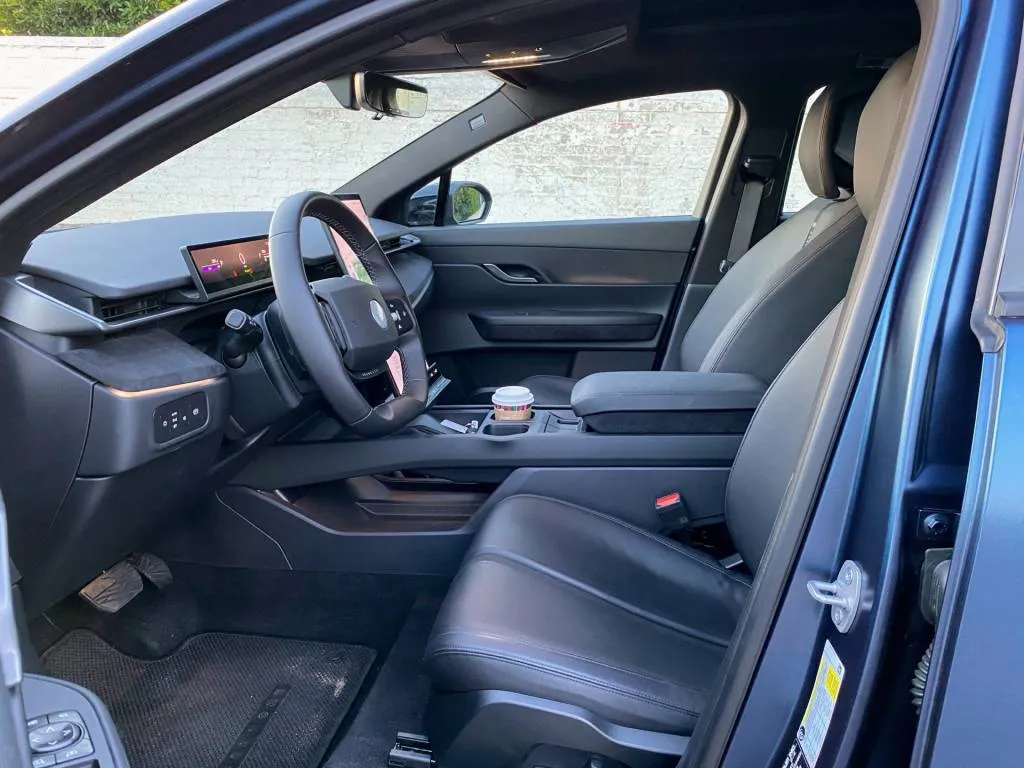



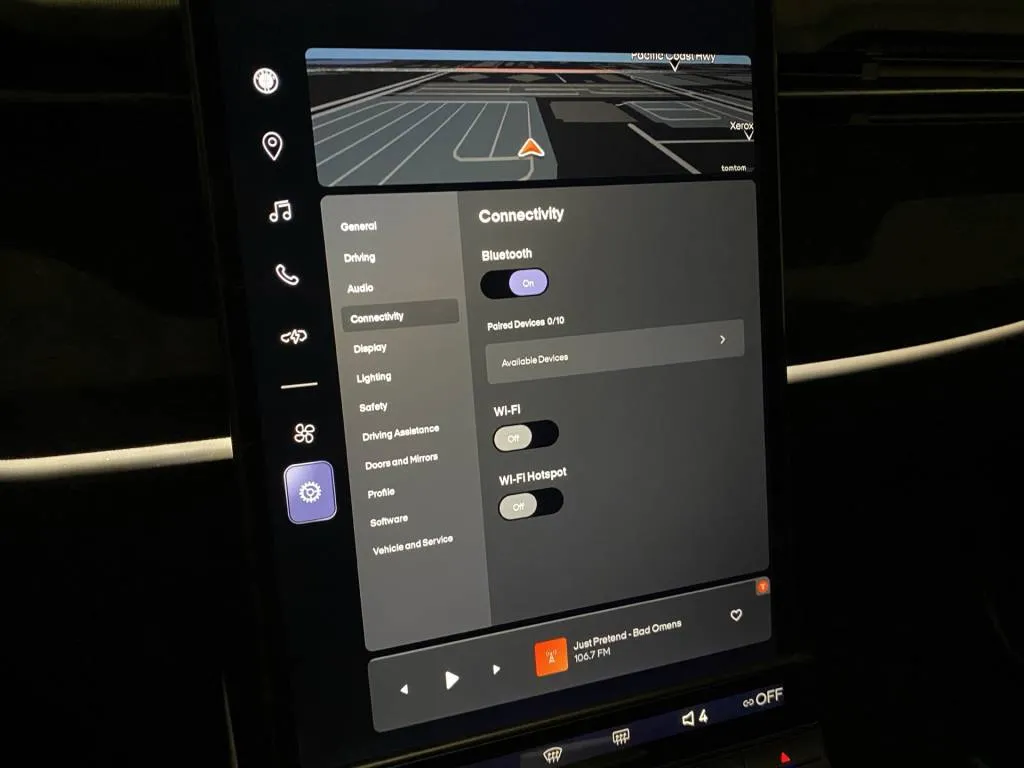



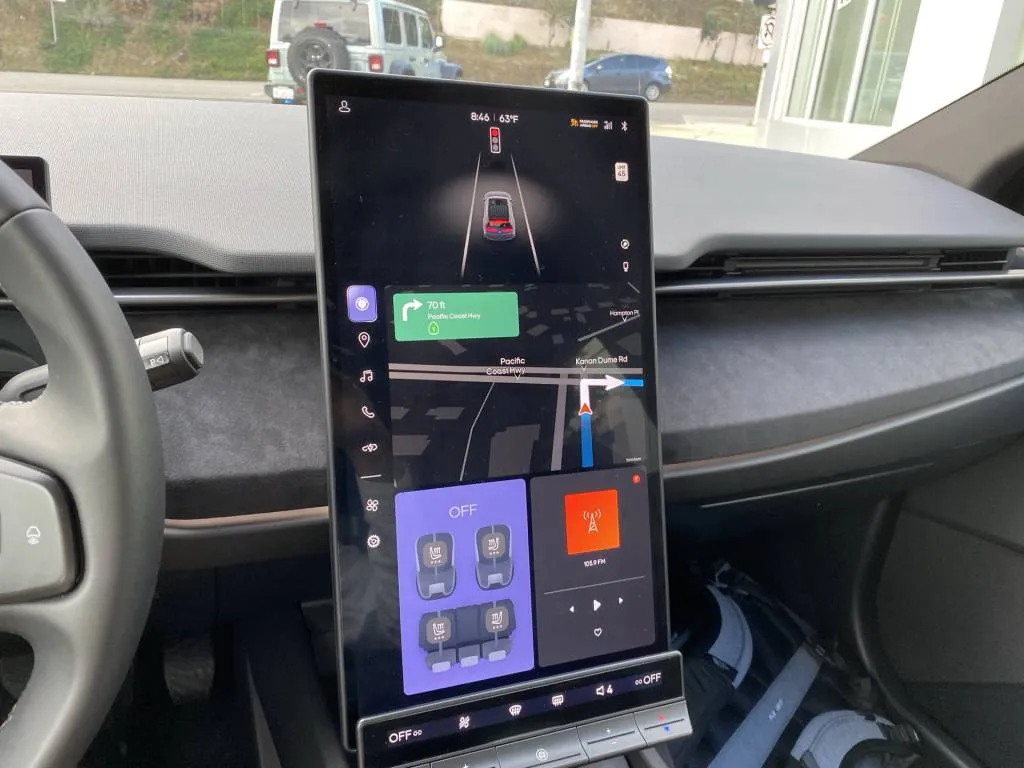
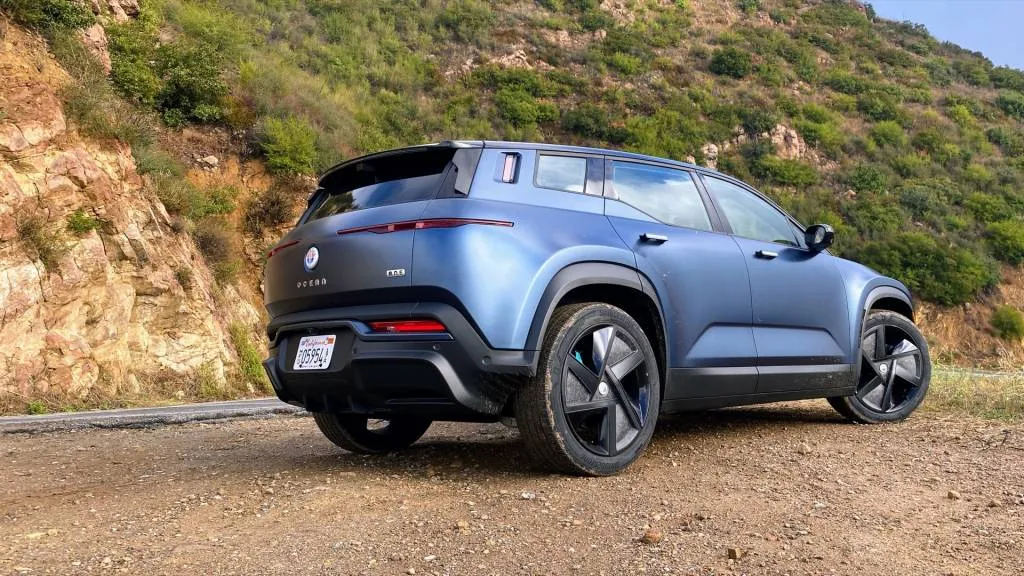

- Ocean EV impressed in design and features, but software and tech details lagged
- OS 2.0 reportedly soothed some issues for this software-defined vehicle
- After June 2024 bankruptcy filing, owner support is a top concern
The most daunting challenge Fisker Ocean owners may face doesn’t relate directly to how this stylish, well-equipped EV is built, or how well it was engineered. It also might not be physical repairs or replacement parts, as resourceful Tesla Roadster owners at one point proved.
Simply put, it’s that the Ocean might never be fully realized in a software sense. Over-the-air software updates hold a good-faith promise of constant improvement—that an EV bought this year might be better-driving and more full-featured in a couple years. But once Fisker filed for bankruptcy on June 17, with creditors’ vying over a liquidation of its assets since then, it’s hard to imagine how or why any entity would continue to improve these “legacy” Oceans to go above and beyond the minimum of consumer support.
That’s arguably been part of the leap of faith that Fisker Ocean buyers took from the get-go, as they took delivery of their vehicles with some decidedly rough edges in a number of interface aspects, prior to the rollout of Fisker’s big update, termed Fisker OS update 2.0.
We’re entering an era, pioneered by Tesla, of software-defined vehicles that can be constantly upgraded over time. That software support often arrives as a brand-building bonus for owners, but it comes at significant cost to a company and involves a team of highly skilled people. It’s not uncommon for newly launched vehicles to have software issues, nor is it unusual for EVs to be delayed due to software or to launch without all of its features. Software has even been at the core of CEO upheaval at one of the world’s largest automakers.
Fisker delivered the vehicle. But somewhere along the way, it became apparent that the momentum from delivering the car alone wasn’t enough. Fisker never faced something like Tesla’s Model 3 “production hell,” and there was no need for CEO Henrik Fisker to be sleeping on the assembly floor even if its contract manufacturer, Austria’s Magna-Steyr, would have let him.
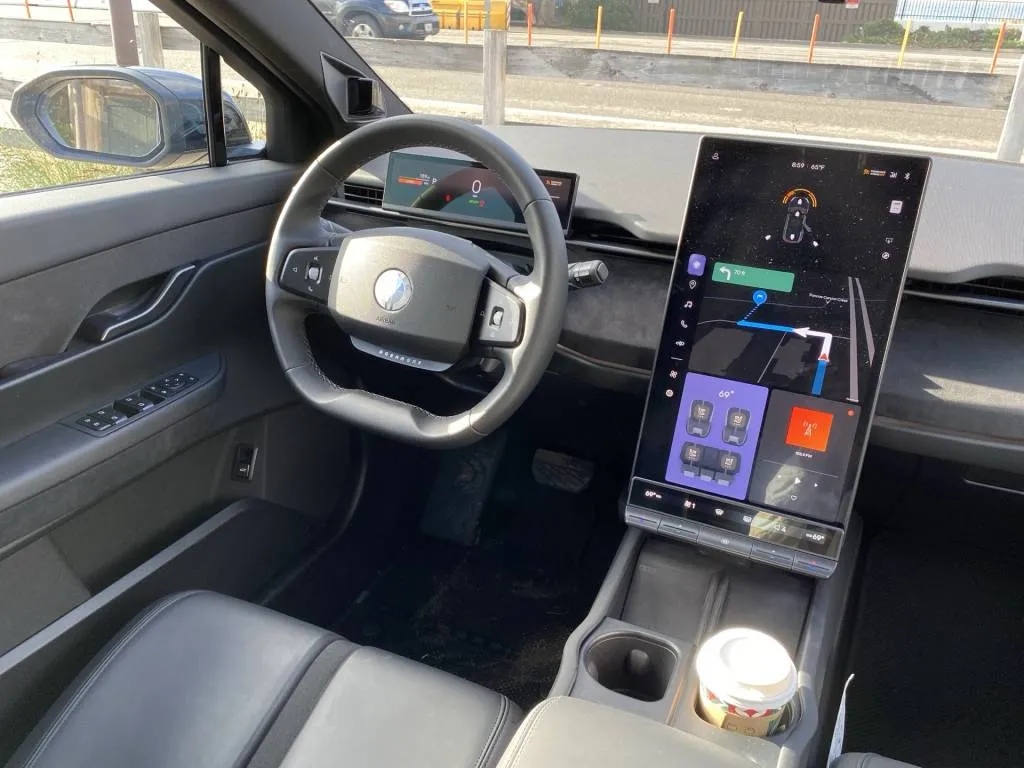
2023 Fisker Ocean One

2023 Fisker Ocean One

2023 Fisker Ocean One
Fisker Ocean: Complete as a functional EV, incomplete in innovation
Fisker’s challenges were revealed clearly late last year when Fisker offered me a first drive of an Ocean overnight; I came away positively impressed in one big respect and quite disappointed in another. As a piece of hardware, the Ocean impressed as very close to fully baked. Next to any number of those vehicles the Ocean feels well-built. Doors opened and closed with a satisfying thunk; switchgear didn’t disappoint; and materials felt durable, pleasing to the touch, and better than what I might have expected for the mission.
But with all the challenges of on-the-ground sales and support channels aside, it was clear from that first experience that while software was key to the Ocean’s success, it clearly lagged.
Now, given the apparent path Fisker has opted to take in bankruptcy, there’s a chance that what Fisker has delivered in software up to now will effectively leave the vehicle frozen in beta. That’s it.
As John A.E. Pottow, a professor of law who studies bankruptcy at the University of Michigan Law School, told Wired in late June, a bankrupt Fisker would “have no obligation to update their software.”

2023 Fisker Ocean One

2023 Fisker Ocean One

2023 Fisker Ocean One
The Fisker Ocean has all of the fundamentals. It’s nicely proportioned and attractively styled, and thoughtful details abound pretty much everywhere you look. It’s also packaged very well. The first time I stepped into its roomy cabin I did a double-take, as itdoesn’t make concessions for a potential internal-combustion option. It really makes the most of what the platform allows.
I’d recently also been in the Kia EV9, and looking from the driver’s seat to the back corner of the vehicle the Ocean seems nearly as large, only it’s not a three-row vehicle. It’s long enough for a third row, with height probably the limiting factor. If space for five and a whole lot of stuff is what you need, the Ocean has it.
All of those smart-looking, smart-packaged traits fit in with what we’ve come to expect from design mastermind Henrik Fisker.

Fisker CEO Henrik Fisker with Ocean, solar roof
Fisker Ocean EV driving impressions: What could be vs. what is (or was)
If I could look past the software oddities and UHF snow and imagined a little bit, it may also be a great driving SUV. It felt like a vehicle that has the basics down pat but needed to quell some software gremlins. On LA freeways, the Ocean had rather light, almost overboosted steering but tracked really well, and it felt smooth, solid, and stable at 80 mph. Even when I loaded up the suspension for a tight, lower-speed off-ramp, it remained well behaved for all its approximately 5,400 pounds (!) of curb weight and it even hinted of a fun side.
I soon worked out that I just needed to bypass the Ocean’s eco-themed Earth mode, and mind the uneasy brake pedal. The core modes to select from are Earth, Fun, and Hyper, and Earth mode did more than just soften responses, as Eco driving modes tend to do. Rather, it added a rubber-band-like lag to power delivery when pressing quickly on the accelerator and suffered from lag before light regenerative braking kicked in when lifting off the pedal.

2023 Fisker Ocean One
The brake pedal itself, on my test vehicle, traveled disconcertingly far before scrubbing off speed, either blended or from the brake pads. I got used to it, but at times it felt a bit like the hybrids and EVs of a decade or more ago, where the last few feet of a stop were a guessing game. Then there also didn’t seem like any rhyme or reason as to why it would creep forward when I lifted off the brake pedal sometimes and not others.
Two permanent-magnet motors operate on the same reduction ratio, emit more than a typical level of EV whine during moderate to hard acceleration, and provide a combined 564 hp and 543 lb-ft of torque. The Ocean felt fully up to claims and expectations for acceleration. I experienced a 0-60 mph time of well under five seconds with a rolling start. Fisker claims just 3.7 seconds with a Launch Mode to be selected from the screen once in Hyper mode, but given my level of uncertainty with its traction and stability systems (which I’ll get to), I didn’t test that.
The Ocean has a lingering feeling that fine details are missing in the way it drives. It bounds over bumps in a way that’s disconcerting at first, but just as with other rather heavy electric SUVs that don’t have air suspensions or adaptive dampers, you get used to that. What remained sorely missing was the safety net of modern, sophisticated, and most importantly predictable stability systems. It became more apparent the more time I spent with it and the harder I pushed it.

2023 Fisker Ocean One
Early on my second day with the Ocean I took it out to canyon roads and those somewhat unhinged electronic nannies kept me from enjoying any fun side of the vehicle. This Ocean’s dynamic envelope felt tuned for electronic chassis systems that weren’t dialed in yet and weren’t playing any anticipatory role. I pushed the Ocean hard on a few corners where I felt comfortable to do so and it simply didn’t feel like it had a modern stability control system. What I experienced instead felt like the early stability systems that were marginally a step ahead of traction control—blipping the brakes reactively rather than doing anything proactive to help keep the vehicle on its intended path and in its lane.
The Ocean seemed to lose some of its cornering poise with the higher regen setting. Regen can be adjusted, but it requires finding the Settings button, then the Driving menu of the infotainment screen. The high regen setting does not allow actual one-pedal driving, but it does scrub off a lot of speed.
Fisker Ocean efficiency underwhelmed
The trip meter didn’t assure me that the Ocean was particularly efficient. It reported that I covered 180.6 miles in the Ocean, using 87.8 kwh of total energy and averaging nearly 2.1 miles per kwh. Energy consumption during about 84 miles that included more spirited driving on canyon roads, using the Ocean’s Fun and Hyper modes, proved to be only slightly lower than moving mostly with the flow of traffic in Earth mode.
Considering the Ocean’s 113-kwh battery pack (106-kwh usable), that’s about 223 miles of range, or at least a third less than its 360-mile EPA range rating. Oof.
Since then, multiple Ocean owners have reported in the range of 300 miles or more on highway trips. Fisker has noted “enhanced accuracy in energy consumption metering,” and trip metering with its software updates made since then, so I’m unsure of the accuracy of those numbers seen during that early drive.

2023 Fisker Ocean One
Fisker Ocean interior: Spacious, innovative, modern
Upon first getting into the Ocean, there’s a lot to take in, and even beyond the top-level product-design work of Fisker, it’s an impressive cabin that the team put together, with great materials and touch points.
The semi-transparent, functional solar roof and California mode were two of the most noteworthy aspects from the get-go—different from what you can find in other EVs. The roof is functional, and according to Fisker it can recover up to 1,500 miles per year (although other automakers have suggested far less from similar systems). As of yet there’s no info screen or way to tell—as in the Hyundai Sonata Hybrid or Toyota Prius Prime—how much energy you’re getting from it.
Located on the roof is a button with a sun symbol to engage California mode, which after a confirming chime opens every window in the vehicle including the rear doggie window and rear tailgate glass. For the sake of rear passengers, California mode is for mostly low-speed cruising fun, although Fisker has tested California mode’s ability to close everything back up and maintain window seals at well over 100 mph, an engineering manager told me.
There’s a real shift lever and wiper stalk and generally speaking the switchgear was easy to figure out. While it lacks a glovebox, Fisker provides plenty of thoughtful touches and places to stow smaller items. Small sturdy tables that Fisker calls taco trays fold out from the center console and allow a space to eat lunch or, when used together, to hold a laptop or become a workstation good for up to 11 pounds. And there are little storage bins under both of the front seats, which is something I haven’t seen in any other vehicle. It works here, why not?

2023 Fisker Ocean One
Both sides of the center console have wireless charging pads, and the infotainment screen can swivel from portrait to landscape positions. Hold the center button below the screen for a few seconds and it rotates, engaging what Fisker terms Hollywood mode. Only available when parked and stopped, it allows occupants to be entertained while charging. The screen mechanism has a very low force threshold (I tested it) for aborting its mission when fingers are in the way, yet it swivels smoothly.
When parked you can see a view of all the cameras available, assisting with low-speed maneuvers and parking, while “current” view allows a 360-degree overhead view combining camera inputs—definitely useful for a quick assessment during parallel parking. Shortcut buttons on the left of the screen toggle between the different priorities, including entertainment, climate, and the navigation, allowing the latter to go full screen. A green charging-station button worksas a navigation shortcut to find one nearby. Fisker also claimed, then and now, that it will automatically route the user to charging stationsas needed along a road-trip route.
Carry the keyfob with you into the vehicle, and it should unlock the doors, Fisker told me—their emphasis—although that intermittently took some extra clicks. Once in the vehicle, tapping the brake pedal turns it on. Walking away from the vehicle is supposed to lock itand place it in a sleep mode, but as in other models it felt like a leap of faith as I would sometimes still see the door handles out from a distance, and then I’d have to walk closer before the Ocean would respond to the lock button on the fob.
The Ocean fast-charges at a peak of around 200 kw and doesn’t precondition, with a 10-80% time of about 35 minutes. All Oceans have a 32-amp onboard charger good for roughly 14 hours from 0% charge to full on a Level 2 outlet.

2023 Fisker Ocean One

2023 Fisker Ocean One

2023 Fisker Ocean One

2023 Fisker Ocean One
Fisker’s touchscreens banked a lot on the software future
When I tested the Ocean, the infotainment system felt complete yet missing a number of features Fisker had promised. There’s no AM radio, but it offers FM plus apps for iHeartRadio, Spotify, and TuneIn. Fisker said months ago that this system could be Apple CarPlay and Android Auto compatible in the future, but by the time I drove it the official word was that it was waiting to get more customer feedback to see if it was necessary.
Some might prefer the map to be on the upper portion of the screen. But you can’t drag the modules around; they sit in dedicated locations on the screen. It also includes live-updated traffic-light information atop the screen, which I found to be remarkably in sync most of the time.
The menu system was quite easy to figure out and within a few minutes I’d switched to the dark display mode, toyed with ambient lighting, scrolled through ADAS features (driver monitoring is on the front pillar, not around the steering wheel), and seen that you can reset the height of the tailgate via the menu system. There was also a rear touchscreen and a Limo mode that gives priority for the climate and entertainment controls to the rear screen.
Some things felt remarkably complete, while others were in glaring omission. Voice controls weren’t enabled yet, but Fisker said they soon would be. While I could pair my phone via Bluetooth, and while a voicemail played fine and I could answer a call, I couldn’t seem to make an outgoing call without disconnecting from the car.
Fisker had also promised to add phone-as-key functionality, but it appears that didn’t to arrive (Bluetooth first, right?). My test car also didn’t have adaptive cruise control. That was set for a future update, according to Fisker.

2023 Fisker Ocean One
Fisker Ocean post-drive download and epilogue
After I turned the vehicle in, I shared some of the feedback about interface niggles that the team had clearly heard about from others and was working on. I also shared those concerns about dynamics directly with chief technology officer David King, a longtime Aston Martin executive who jumped to lead Fisker’s global engineering and software teams. King promised me that the company’s software OS 2.0 was just a few weeks away, included updates that would batten down the dynamics I described, and that the team would make sure I experienced that as soon as they had it in something outside development vehicles.
Those few weeks turned into a few months. Fisker released the first of three pieces of Ocean OS 2.0 on a beta basis in late February, and it reported in early April that it had been rolled out to most customers. Part 2 and 3 arrived later in April, with the latter updating the keyfob. After more requests Fisker went dark on product PR. Then on June 17, however, the company filed for bankruptcy.

2023 Fisker Ocean One

2023 Fisker Ocean One

2023 Fisker Ocean One
What Fisker’s last and best official update gets you
The most noteworthy driving change for OS 2.0 is this model’s shift of the base torque split to rear-biased (45:55 front to rear), with an even stronger rear bias in Fun and Hyper modes during dynamic driving.
As King insisted, OS 2.0 was comprehensive in ways we haven’t seen from many other automakers. It even included a software update to the keyfob, said to “improve button click performance and response.”
Fisker adjusted the climate control performance in Earth Mode for more comfort, introduced individual driver profiles for a range of settings, and better managed energy drain when parked with a standby mode allowing an adjustable “sleep state” defaulting to 24 hours. It also fixed a few of the minor criticisms I had in notes, like how the vehicle’s Hill Hold feature held the vehicle so briefly there wasn’t enough time to look about and move one’s right foot to the accelerator.
Based anecdotally on some owners’ feedback and social-media postings, the brake-hold behavior has been soothed, energy management appears improved, and the modes and drivability have been improved. But plenty of bugs remain.
Among the features Fisker planned to enable in 2024 are a “Park My Car” autonomous parking feature, adaptive cruise control with lane awareness, a PowerHouse mode that would allow the Ocean to provide emergency backup power for days, and a PowerCar system that would allow the Ocean to charge other EVs. Unfortunately, these features will likely never arrive.

2023 Fisker Ocean One
Hold on. This could be a pretty good EV.
Why am I wrapping up these thoughts now? The Fisker bankruptcy is in process and production has halted indefinitely. Although I never got the promised perspective on how quickly its EV was improving, I should underscore that the Ocean as it was delivered had a lot of potential. It showed a lot of hard work was put in by both from supplier Magna and Fisker itself.
The Ocean is far, far from the worst vehicle I’ve ever tested. It’s not far-fetched to envision it, with some major software updates and simplification of hardware, being one of the better vehicles in its class. It was developed with real mass-production scale in sight, as its approximately 11,000-vehicle production total until the financially imposed shutdown demonstrates. And it did go through proper hot-weather and high-speed testing.
Earlier this month Fisker was cleared to sell more than 3,000 of its EVs in North America to a leasing company for up to $46.25 million, including an initial lot of about 1,000 vehicles at $14 million. Yes, that’s about $14,000 per Ocean EV—20% of the approximately $70,000 sticker for the one I’d driven months ago.
The Ocean is a more complete vehicle, and it shows far more market potential versus the Fisker Karma that was purchased many years ago and continues to be made in very low volume as the Karma Revero.

2023 Fisker Ocean One
In some respects, it seems unlikely that the Ocean as a product will be completely shelved. It’s fully DOT-legal, and it’s already complete in all the aspects that are very costly in the development stage. With the help of a couple more major software updates, it could be a very good vehicle. If it is revived, it might not ultimately bear the Fisker name. But if it does live up to its promise, it will have Henrik to thank.
Source link by Green Car Reports
Author news@greencarreports.com (Bengt Halvorson)
#Review #Postmortem #Fisker #Ocean #promising #frozen #beta
